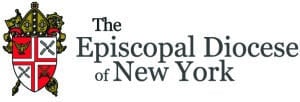Communications Contacts
Mr. Nicholas Richardson
Director of Communications, Editor, Episcopal New Yorker
Office: 212-316-7520
Fax: 212-932-7323
nrichardson@dioceseny.org
Mr. Andrew Gary
Assistant to the Chief of Finance and Operations, Communications & Editorial Assistant
Office: 212-932-7322
Fax: 212-932-7323
agary@dioceseny.org
Bishop Dietsche Announces Return of the Common Cup
Decline in Covid-19 Infections Opens Way
In a message sent by email today to clergy and congregations of the diocese, and shown in full below, Bishop Dietsche announced the end of the prohibition on the sharing of the Communion Cup, effective immediately.
View/Download the Bishop’s Letter as a PDF
Monday, March 14, 2022
My Brothers and Sisters,
Sunday, March 15, 2020 was the last day before we suspended public worship in the Diocese of New York as a response to the Covid pandemic. Over the two years which have followed, we have seen coronavirus infections rise and fall, with seasons of surge and seasons of relief. During that time churches have relaxed many or most of the restrictions on public worship which we had introduced earlier, but the single requirement which has continued across our diocese has been the restriction against administering communion wine in the Common Cup. We have for all this time received the sacrament “in one kind,” and we have found that we have been able to continue to be a sacramental people, and we have adjusted to that new reality.
However, with the waning of the omicron surge, and the dramatic fall in the rate of infections in all parts of our diocese, I have a new message:
I am happy to authorize, effective immediately, the return to Communion in Both Kinds, and to permit, and encourage, the restoration of the Common Cup in the worship of our churches.
It seems to me that as we approach Holy Week, Palm Sunday would be an opportune time to re-introduce the Common Cup, but no one needs to wait. This permission is immediately effective. Recognizing that people have varying levels of comfort during a continuing pandemic, I want to be clear that no one is required to drink from the chalice. No is any parish required to do this until they are ready. But the prohibition is lifted.
For churches which practice Intinction, I do want to make an additional instruction. The last two years have raised for all of us again the question of hygiene and communion. Two thousand years of experience have taught us that wine can be safely communicated when people drink from the Common Cup, if the eucharistic minister properly wipes the cup between communicants. The practice, however, of people dipping the host into the chalice with their own fingers carries a high likelihood of fingers touching or plunging into the wine itself. Every eucharistic minister has seen this, and it is a certainty that this is an unclean and unsafe practice. Intinction is an acceptable practice in administering communion, but it is correctly done by the priest or eucharistic minister, with clean washed hands, dipping the host into the wine and placing it on the tongue of the communicant. The practice of people dipping the host themselves is not permitted.
The restoration of the Common Cup should not be interpreted to mean that Covid is over. Rather, it signifies that we have come to a time when all of our customs in life must adapt to the reality that Covid is with us indefinitely or long-term, and we must learn how to live with it with the highest degree of safety possible. Future variants or surges may come, and if they do, I call on all of our churches to return as necessary to the safe and reasonable restrictions that will ensure that our churches are safe places for everyone.
I have long felt that the passing of the communion cup from person to person is one of the most powerful symbols we have in the Christian church of our mutual vulnerability, depth of community, and open self-offering one to another. As a very frequent celebrant at our altars, I have often felt uncomfortable and even lonely when I have drunk from the cup alone. So I have longed for this day, and the full return of our customary and ancient practice of holy communion. May this add to the joy of our Easter celebration and the lifting of our collective heart! With every good wish, I remain
Yours,
The Right Reverend Andrew ML Dietsche
Bishop of New York





